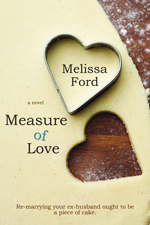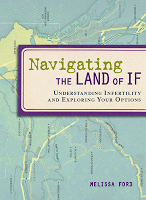Infertility Rates Decrease… Sort Of
The number of married couples diagnosed with infertility has dropped from 8.5% to 6% according to a new study.
About 6 percent of married women under 45 failed to get pregnant after at least a year of sex without contraception, according to the report. That’s down from less than 9 percent some three decades ago.
The emphasis on married is mine. It has been a long-standing divide in the infertility community between those who are situationally-infertile and those who are biologically-infertile. Or rather, the divide comes more at the scientific and political levels; down here in the trenches, assisted conception is assisted conception. But it’s seen quite clearly in the study itself, which only questioned married, heterosexual couples rather than looking at single parents by choice who also turn out to need IVF to conceive or lesbians who suffer from recurrent pregnancy loss.
In other words, if you’re only asking married couples about their fertility, you’re not really getting a very clear picture of fertility rates since a person can be both situationally and biologically infertile at the same time. I would have a lot more interest in the study if they looked at individuals. A fertility study that only looks at married heterosexuals doesn’t really tell the full story despite media outlets reporting to the contrary.
What it comes down to is whether you believe someone who needs assistance to conceive should be counted amongst others that also need assistance to conceive. There isn’t a clear-cut, black-and-white answer. We could debate this incessantly, trying to find the boundaries. It isn’t helped by the fact that such a large percentage of people diagnosed with infertility are considered “unexplained” (nearly 20%). That lack of why also creates a problem when creating the definition for infertility, and because it is such an amorphous disease at times, excluding populations that don’t neatly fit into the definition is one way of making it specific.
The problem with that is, of course, that (again) people can be a single-mother-by-choice or lesbian who can’t conceive despite numerous IUIs, making them both situationally and biologically infertile. But those people aren’t counted in studies like this despite existing.
So yes, infertility rates are down amongst married couples. But that says nothing about whether infertility rates are down overall for individuals.













7 comments
Stats are whatever you want them to be. I wish more people understood that…
One point that got barely a mention was the economy. There are people delaying trying to get pregnant because of their financial situation. Birth rates have gone down to “historic lows” so the decrease in “infertility” may be artificial because of their definition. I personally feel that a person can be both infertile and not actively trying to have a baby. I didn’t have to try for a year to know I was infertile. A decade of anovulation was enough to send me straight to injections without any “trying.” Now that I have children I am not cured.
I think that statistic is extremely questionable too. I’ve seen quite a few non-married couples seek fertility treatment, and I’ve seen quite a few married couples not go to an RE due to finances or other reasons (belief systems, personal feelings, emotions, etc…). I just think it leaves a lot to be desired.
Also the headline claimed that infertility was down among “married U.S. women”, but the survey didn’t take into account whether the infertility issue was male or female. So we don’t know if infertility is down among women, among men, or both.
You mention married couples and people that are situationally-infertile, but there’s another group missing in there: committed heterosexual couples that are trying but are not married (whether that’s a “yet” or because they don’t believe in marriage for themselves). My boyfriend and I are starting to try before we get married, because we don’t know whether my infertility with my ex was male-factor or female-factor. We’ll be married before we’ve tried long enough for it to count as infertility, but I know I’m not the only woman TTC with a man I’m not married to.
Yup.
I have four charts about two inches thick at my RE’s office. My primary diagnosis–despite the whole RPL and DOR thing–was for a very long time “male factor.” You know, because I was single and used donor sperm…
Such conflicting information out there. The statistic has been 1:8 couples after a year of unprotected sex, but the statistic that is being bandied about (mostly as a side note in articles/interviews regarding Jimmy Fallon’s surrogacy revelation) is 1:6 couples:
http://www.fertilityauthority.com/news/2013/jan/14/infertility-rise-1-6-are-infertile-study-says